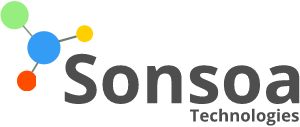Transforming Traditional Dentistry Approach Using 3D Printing And Scanning Technologies
Sonsoa Technologies is working on a novel idea to transforming traditional dentistry approach using 3D printing and scanning technologies.
Digital intraoral scanning and digital X-rays together deliver extraordinary clarity and accuracy. If you add to this CAD/CAM software that can merge the surface scan from a digital impression with a 3D digital X-ray to give the dentist a complete picture of the oral situation above and below the gum line, you have a fantastic aid to diagnose, treatment plan and deliver treatments and a great base for dentist-patient communication.
How the technology work?
With a wide range of dental specialties from general dentistry to implantology, prosthodontics, and orthodontics, the design of different treatments and prostheses varies somewhat by specialty and application, but they all follow the same basic workflow.

Source: Roland Berger website (accessed on 20/03/2022)
Following a digital flow means tracing a system mediated by digital resources in order to optimize clinical work, currently to a greater or lesser extent we are already immersed within this system, because already using a CBCT, making cephalometric measurements with software or with the simple use of a digital camera, we are developing works with incomplete or partial digital flows, and what many companies with R&D departments work on today is the development of complete digital flows.
A complete digital flow consists of three phases:
- Scan/Digitization
- Design
- Production
Scan/Digitization
With Primescan or Omnicam , the patient’s preparation, antagonist and bite situation are covered quickly and accurately, powder-free and in colour. Also, the scanning process can be interrupted and restarted at any time. And what is the advantage of digital impressions? That allow you to evaluate the quality directly on the screen.

Like traditional dental and orthodontic product fabrication, digital production starts with the patient’s individual anatomy. 3D intraoral scanners can be used in the dental or orthodontic practice to capture scans digitally from the patient, replacing manual impressions with fast and accurate impressions. Alternately, desktop optical scanners in dental labs can be used to scan traditional impressions or plaster models. For treatments and applications that require patient osteotomy, such as surgical guides for implant placement, an additional dataset needs to be collected using CBCT scanners.
Plan and Design
After scanning, patient anatomical data is imported into dental or orthodontic CAD software for planning treatments and designing prosthetics, mock-ups, and models. For simple diagnostic models, you can also convert intraoral 3D scan files directly into printable dental models in PreForm, Formlabs’ print-preparation software. Most software packages use design processes very similar to traditional methods, employing highly visual interfaces with features like virtual articulators that are familiar to technicians. Digital design results in easier, more precise treatments and simplified communication. After the treatments are designed, models can be exported for manufacturing. If a remake is needed, the same digital design can be reused without additional effort.

Recommended tools for dental and orthodontic practices and labs: Dental CAD software, PreForm (free)
Production
To manufacture a dental product, 3D models are uploaded to the CAM or print-preparation software and then sent to a 3D printer or a milling machine. 3D printers are common in both labs and practices and can produce a variety of indications, including models for thermoforming aligners and retainers, diagnostic models, surgical guides, splints, retainers, indirect bonding trays, dentures, temporary and permanent restorations, and more. They work by solidifying parts layer by layer to form the shape of the appliances and models. To create orthodontic appliances like clear aligners or retainers, manufacture them over the 3D printed models using existing workflows and tools such as thermoforming. Milling machines are more common in dental labs, but also have some limited applicability to the dental practice as well. These are typically used to create final restorations by subtracting from a solid block of material, such as zirconia.

Recommended tools
- For a dental practice: 3D printer
- For an orthodontic practice: 3D printer
- For a dental lab: 3D printer, milling machine
Workflow Between Lab and Practice
With the traditional workflow, the practice takes a physical impression of the patient, ships it to a dental lab that creates the required models, restorations, or other indication(s), which the lab then ships back to the practice for the treatment.
In digital workflows, the individual steps can alternate easily between lab and practice, depending on the complexity of the case, the indication, the tools available at a practice, and other conditions.
For example, a dental practice can take a digital impression or send a manual impression for scanning at the lab. With the digital impression, a practice can also design the models, restorations, and other indications in-house in CAD software or outsource design to a lab. With chairside 3D printing, a practice can then manufacture simple indications like models, surgical guides, splints, or models for thermoforming in-house and rely on a lab for complex parts such as all-ceramic restorations. Labs can manufacture parts in-house with 3D printing or milling or offer design as a service and send the design files to their customer for chairside 3D printing in the dental practice.
Overall, digital technologies simplify the workflow between practice and lab, offering unlimited freedom to optimize for speed, ease of use, or cost, depending on the case.

Source: Roland Berger website (accessed on 20/03/2022)
There is no question that digital technologies are rapidly gaining traction. In the coming years, we expect dentists not only to adopt already mature technologies but to engage with emerging intelligent solutions. Solutions that will further disrupt the dental care market by delivering additional benefits for dentists, technicians and – most importantly – patients.
If you are interested in implementing digital workflow in your practice, please contact team @ Sonsoa Technologies Ltd.

